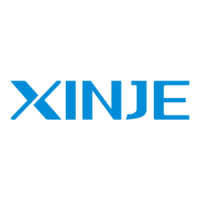55
HEX: HEXADECIMAL NUMBER
Set as the operand value and action of applied instruction (constant H)
BIN: BINARY NUMBER
Inside the PLC, all the numbers will be processed in binary. But when monitoring on the
device, all the binary will be transformed into HEX or DEC.
OCT: OCTAL NUMBER
XD/XL series PLC I/O relays are in octal. Such as [X0-7, X10-17,….X70-77].
BCD: BINARY CODE DECIMAL
BCD uses 4 bits binary number to represent decimal number 0-9. BCD can be used in 7
segments LED and BCD output digital switch
Other numbers ( float number)
XD/XL series PLC can calculate high precision float numbers. It is calculated in binary
numbers, and display in decimal numbers.
PLC program should use K, H to process values. K means decimal numbers, H means hex
numbers. Please note the PLC input/output relay use octal address.
Constant K
K is used to display decimal numbers. K10 means decimal number 10. It is used to set timer
and counter value, operand value of applied instruction.
Constant H
H is used to display hex numbers. HA means decimal number 10. It is used to set operand
value of applied instruction.
Constant B
B is used to display binary numbers. B10 means decimal number 2. It is used to set operand
value of applied instruction.
2-12.Programming principle
Sign P and I
P is the program sign for condition and subprogram jump.
I is the program sign for interruption (external interruption, timer interruption, high speed
counter interruption, precise time interruption…).
P and I addresses are in decimal. Please refer to the following table:

